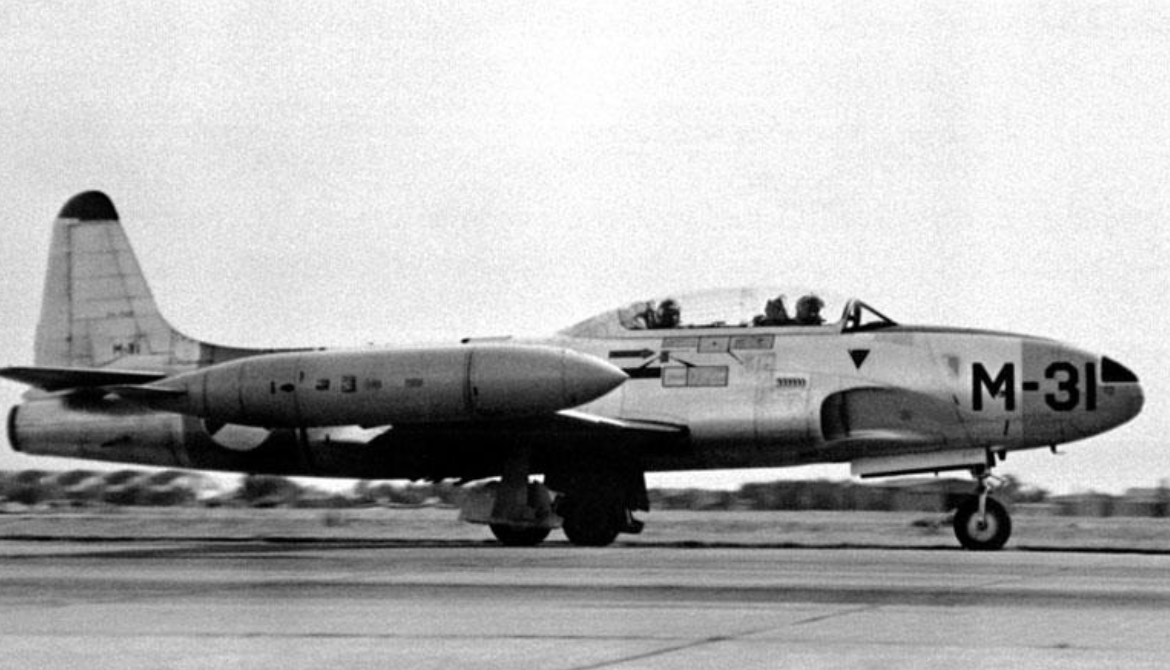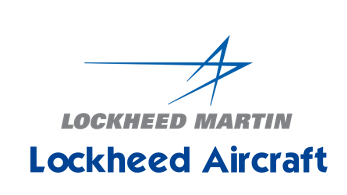Lockheed
Lockheed T-33 T-Bird
 |
|
| A demonstration T-33 in flight in 2016 | |
| Role | Training aircraft |
|---|---|
| Manufacturer | Lockheed |
| Designer | Clarence "Kelly" Johnson |
| First flight | 22 March 1948 |
| Retired | 31 July 2017 (Bolivian Air Force) |
| Primary users | United States Air Force United States Navy Japan Air Self Defense Force German Air Force |
| Produced | 1948–1959 |
| Number built | 6,557 |
| Developed from | Lockheed P-80 Shooting Star |
| Variants | Lockheed T2V SeaStar Canadair CT-133 Silver Star |
| Developed into | Lockheed F-94 Starfire Boeing Skyfox Lockheed NT-33A |
.
History Lockheed Aircraft Company
T-33 Shooting Star (or T-Bird)

The Lockheed T-33 Shooting Star (or T-Bird) is an American subsonic jet trainer. It was produced by Lockheed and made its first flight in 1948. The T-33 was developed from the Lockheed P-80/F-80 starting as TP-80C/TF-80C in development, then designated T-33A. It was used by the U.S. Navy initially as TO-2, then TV-2, and after 1962, T-33B. The last operator of the T-33, the Bolivian Air Force, retired the type in July 2017, after 44 years of service
The T-33 was developed from the Lockheed P-80/F-80 by lengthening the fuselage by slightly more than 3 feet (1 m) and adding a second seat, instrumentation, and flight controls. It was initially designated as a variant of the P-80/F-80, the TP-80C/TF-80C.
Operational history
U.S. Navy service
Military use by other nations
Some T-33s retained two machine guns for gunnery training, and in some countries, the T-33 was even used in combat: the Cuban Air Force used them during the Bay of Pigs Invasion, scoring several kills including sinking two transport ships. The RT-33A version, reconnaissance aircraft produced primarily for use by foreign countries, had a camera installed in the nose and additional equipment in the rear cockpit. T-33s continued to fly as currency trainers, drone towing, combat and tactical simulation training, "hack" aircraft, electronic countermeasures, and warfare training and test platforms right into the 1980s.


0
KmCeiling
0
KmRange
0
km/hAircraft Speed
0
Max Crew
Photo Gallery
Lockheed Aircraft Company
T-33 Shooting Star (or T-Bird)


Lockheed Aircraft Company
T-33 Shooting Star (or T-Bird)
General characteristics
-
- Crew: 2
- Length:(11.51 m)
- Wingspan: (11.849 m)
- Height:(3.56 m)
- Wing area: (21.81 m2)
)
Powerplant
-
- Empty weight: (3,794 kg)
- Gross weight: (5,475 kg)
- Max takeoff weight: (6,832 kg)
- Powerplant: 1 × Allison J33-A-35 centrifugal flow turbojet engine, 5,400 lbf (24 kN) thrust
Specifications
-
- Maximum speed:970 km/h,at sea level
- Cruise speed: 455 mph (732 km/h
- Range: 1,275 mi (2,052 km, 1,108 nmi)
- Service ceiling: (15,000 m)
- Rate of climb: 4,870 ft/min (24.7 m/s)
Links to Youtube & Others
The two-place T-33 proved suitable as an advanced trainer, and it has been used for such tasks as drone director and target towing. A reconnaissance version known as the RT-33A with a camera installed in the nose and additional equipment in the rear cockpit was also produced..
Lockheed Aircraft Company T-33 Shooting Star (or T-Bird)
Some T-33s retained two machine guns for gunnery training, and in some countries
Youtube Link
In the 1980s, an attempt was made to modify and modernize the T-33 as the Boeing Skyfox,.














.svg.png)